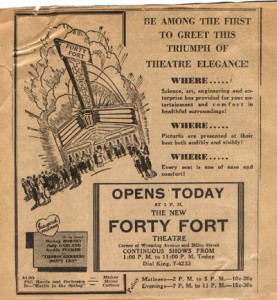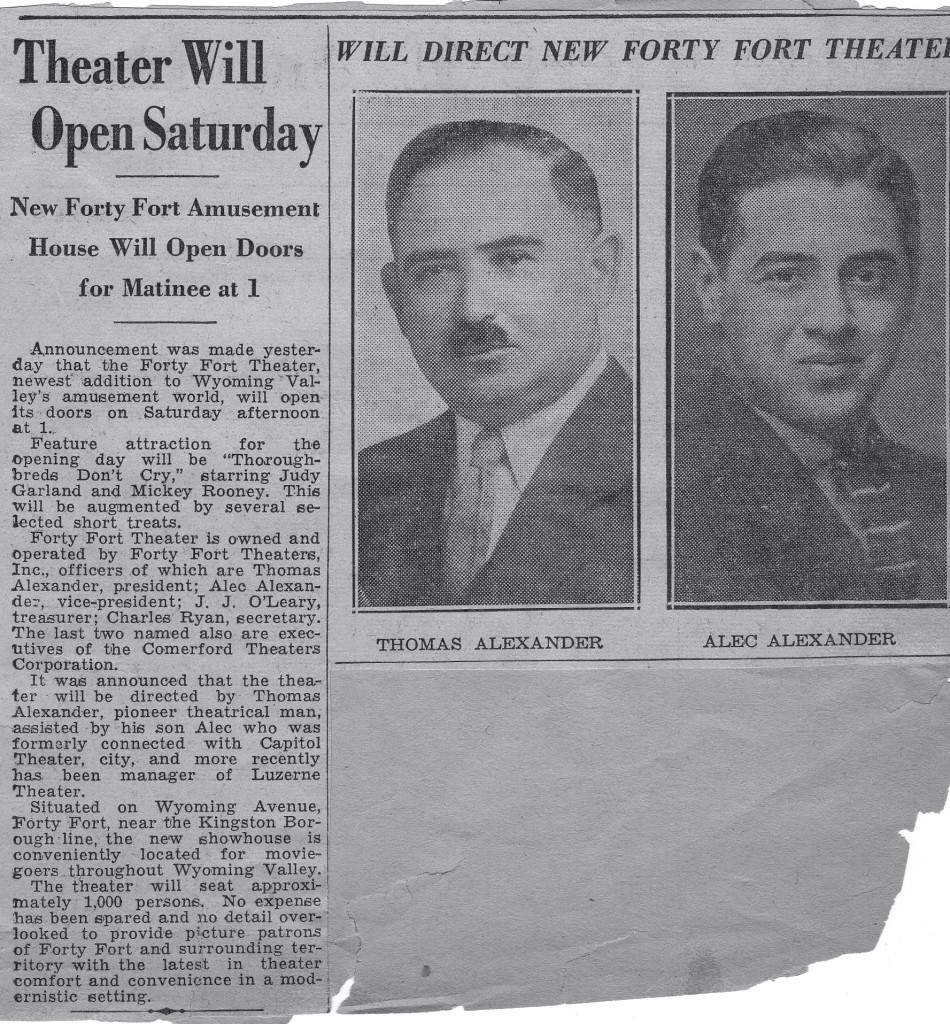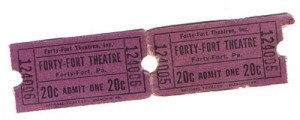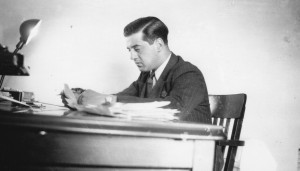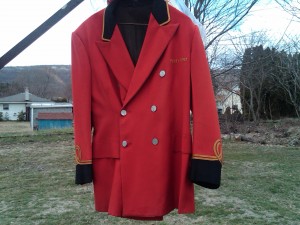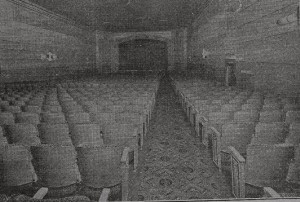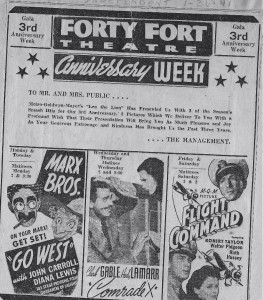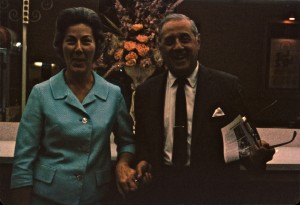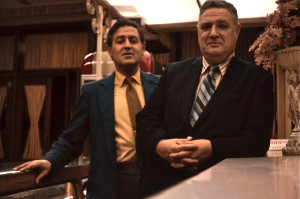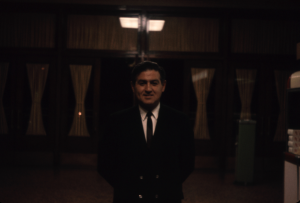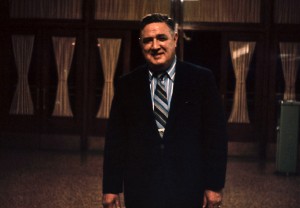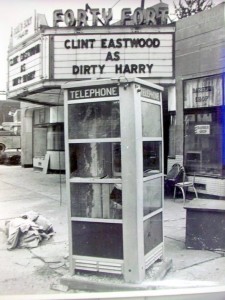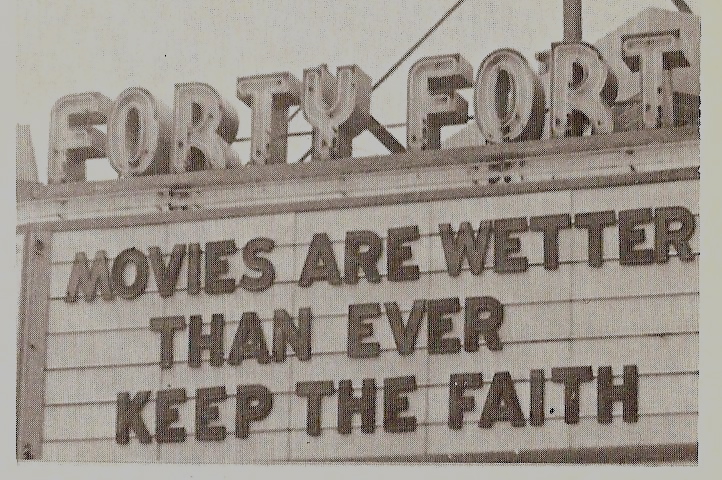The Forty Fort Theatre broke ground 1936. It was a pivotal year for the Alexander family. Louis Marinos Sr. had died. Thomas’ eldest son Alec, who had continued to work in the industry for other theatre owners, grew tired of the way his new bosses ran things, and approached his father about building another theatre of their own. Alexander partnered with the Comerford Corporation and promised to build a state of the art showplace at the southern end of Forty Fort. It would be a gift to a town that needed a theatre and a legacy to his sons. (Note: A second theatre, called The Institute, operated for a short while by several managers including the Alexanders and Marinos’ on Forty Fort’s northern end)
Thomas Alexander was president of the new theatre and son Alec was vice-president. Comerford executives J.J. O’Leary and Charles Ryan were named treasurer and secretary respectively.
On Saturday, January 29th, 1938, The Forty Fort Theatre opened with the Mickey Rooney-Judy Garland film, Thoroughbreds Don’t Cry. Alexander’s promise of a grand showplace was realized with its art-deco lighting, terrazzo floored lobby, spacious auditorium, ruby red drapes and carpeting, and the stunning ornately hand-detailed golden proscenium arch that surrounded the silver screen. Uniformed ushers stood sentry at each aisle as patrons walked past large promotional displays that featured Clark Gable, Cary Grant, and Carole Lombard. On the west side of Wyoming Valley, the Forty Fort Theatre was “the” showplace.
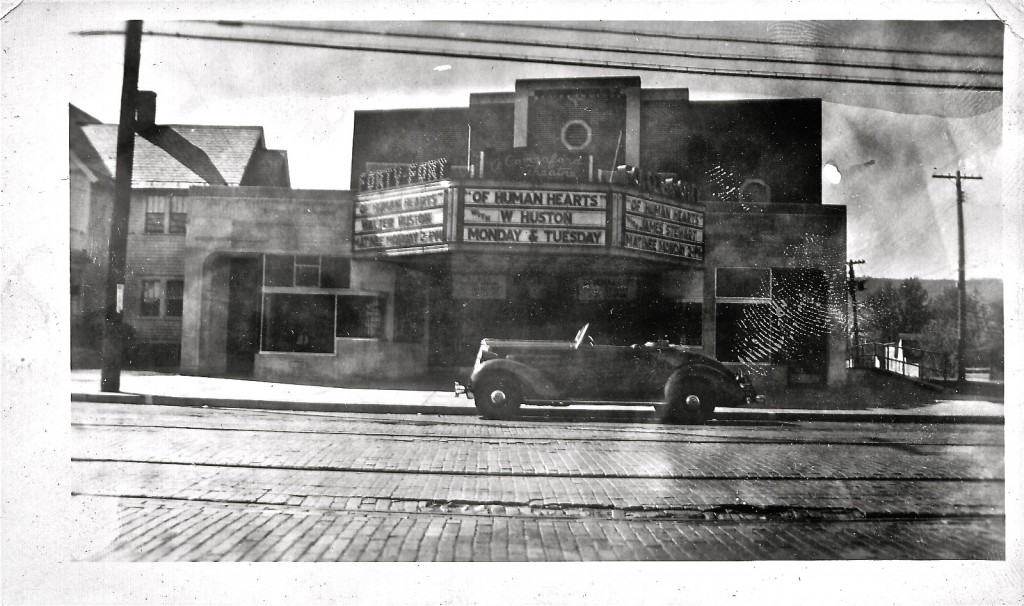
Year One. The Forty Fort Theatre as it looked shortly after opening in 1938. Wyoming Valley residents my be interested in noting that Wyoming Avenue was brick at the time and street car tracks are clearly visible. (Click on image to enlarge)
All of Thomas Alexander’s sons worked at the theatre, but when they were called to serve their country during the second World War, he returned from a semi-retirement at the age of sixty to man the helm of the Forty Fort Theatre.
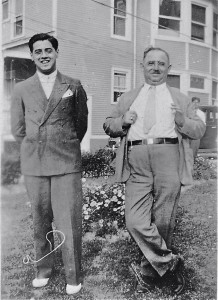
Alec Alexander standing next to his dad, Thomas before departing for the theatre. In the background is Alec's brother Peter. Circa 1940. (Click on image to enlarge)
In October of 1946, Thomas Alexander died after falling down a staircase in his Kingston, Pennsylvania home. But his four sons, Alec, Frank, Peter, and Taki (pronounced tie-key) continued in their father’s footsteps, and the Forty Fort Theatre would operate for another forty-two years – and a total of fifty consecutive years.

Thomas Alexander passed away on October 3, 1946. His obituary from the Times Leader, Wilkes-Barre, PA.
In 1950, the Alexander family bought out the Comerford’s interest, and owned it solely.
In 1953 Forty Fort was the first theatre in the Wyoming Valley to introduce the wide screen Cinemascope format and stereo sound, with 20th Century Fox’s production of The Robe – the first major motion picture to be produced in the wide screen process. A curtain featuring the Greek Key replaced the ruby red curtain.
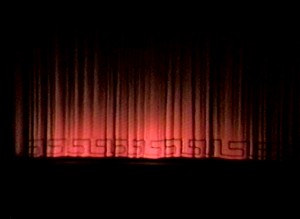
The Greek Key curtain that opened before a cinemascope wide screen, became an iconic symbol of the theatre. It replaced the ruby red curtain in 1953.
Television came to the area the same year when WBRE-TV hit the airwaves. TV in the Wyoming Valley was not an immediate overwhelming success, but within two years it posed a serious threat to the theatre business. The movie industry reacted with not only Cinemascope and stereo, but 3D and other, more gimmicky formats and promotions to lure audiences away from the little screen and into theatres. It worked for a while. But the industry and theatres around the country noticed a steady decline at the box office.
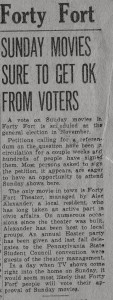
Newspaper clipping assuring Forty Fort residents Sunday movies were a lock. (click on image to enlarge)
1953 included another turning point in the theatre’s history. Sunday Movies. Due to “unwritten” blue laws, the borough forbid the showing of movies on Sundays for the first fifteen years of the theatre’s operation. The thinking was it would interfere with churchgoing activities. The management stressed that performances wouldn’t start until 2:00 PM, well after any church service, but citizens still balked deeming such self-indulgent activities were inappropriate on Sunday. Finally, in the November general election, the motion passed, and movies were shown at the theatre starting at 2:00PM.
The 1960’s were a bit of a rollercoaster ride as the movie business recovered for a while. The Forty Fort Theatre, like many theatres of the day offered promotional giveaways. Dish Night in particular was extremely popular.
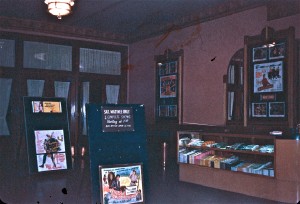
In 1965, the theatre went through a major remodeling. In the lobby, the concession stand had a lighted canopy placed over it, and the theatre finally added a popcorn and soda machine. Popcorn was popped fresh throughout the day and evening. The lobby walls were painted gold. In the auditorium, new carpeting was added to coordinate with freshly painted walls. Improvements to the projection booth, restrooms, box office and entranceway were also done. The adjoining store rooms were also refurbished.
On April 1, 1968, the industry began rating films. The first ratings were G for General Audiences, M for Mature Audiences, R which meant restricted, and X which prohibited anyone under 16 (later 18) from entering the theatre. The ratings system was initially intended as a gimmick to lure curious patrons to see more risque, adult-themed films. Even today, the coveted R rating still attracts the younger demographic. The 1960’s closed with what were considered at the time, groundbreaking films that challenged the acceptable standards of the era. These films included The Graduate and Midnight Cowboy. The latter received an X rating upon its initial release. It was later granted an R rating. The Forty Fort Theatre did what it could keep up with the changing industry.
With the dawning of a new decade, the 1970?s saw Frank’s son Thomas F. Alexander join the family business. He would be followed a few years later by Peter’s son, Thomas C. Alexander.
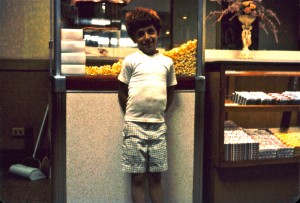
Matinee Days. Thomas C. Alexander on a Saturday afternoon in front of the popcorn machine. Circa 1971.
In 1972, Hurricane Agnes produced three days of heavy rain along the eastern seaboard, causing massive flooding that at the time was the greatest natural disaster in US history. The Susquehanna River overflowed its banks and the Wyoming Valley was the hardest hit region in the state. The Forty Fort Theatre had just begun a run of the Clint Eastwood film Dirty Harry when the flood hit.
The theatre was closed for two months and reopened after an exhaustive clean up on August 23rd with the Woody Allen comedy, Play It Again, Sam.
Initially after the flood, business was brisk, but the movie exhibition industry was beginning to change. Twin theatres were the new craze. They were the forerunner to the megaplexes of today. The Alexanders considered for some time actually twining the Forty Fort Theatre, going as far as having plans drawn up. But while they were considering that possibility, the state had plans of its own. One of the original proposals was for a new bypass road called the Cross Valley Expressway to go right through the neighborhood where the theatre stood. However, the state eventually abandoned that plan, shifting the route slightly south, and the Alexander’s ditched the twinning notion, and remodeled the theater in the mid 1970?s, choosing instead to maintain its single screen charm.
A new marquee was installed in 1974, followed by new seats and a redecorated lobby in 1976; little of which mattered as first run product became harder and harder to secure. The Saturday afternoon children’s matinees that featured everything from The Three Stooges, Dracula, and Godzilla to Captain Nemo and Hercules went by the wayside by 1977. The age of the single screen theatre was fading.
Blockbuster sci-fi spectaculars had replaced the disaster epics of a few years earlier and merchandise tie-ins with the growing corporate theatre chains were the wave of the future.

Concession stand in the lobby of Forty Fort Theatre, Forty Fort PA. June of 1985. Left to right: Peter and Mary Alexander (parents of Thomas C. Alexander), cousin Efthimia Koutrufini (visiting from Greece), Taki Alexander, Alec Alexander and Thomas C. Alexander. Very happy days - but it was close to the end of our theatre era. Closed in 1988.
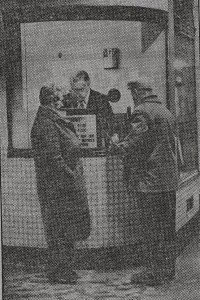
In October of 1986, Peter Alexander, who had taken over operations of the Forty Fort Theatre some years earlier, passed away unexpectedly. Alec and Frank had retired, leaving Taki and his two nephews to run the aging movie palace. In a new landscape dotted with cineplexes, the Forty Fort Theatre became the last bastion of an era long gone. Its grand trappings began to show wear and equipment became outdated (Though they improved the sound system and converted from the standard change-over/carbon arc style projectors to the more updated platter/Xenon lamp units in 1984).
The crowds dwindled as competition for first run product grew fierce. With great reluctance, the family decided to close the doors of the Forty Fort Theatre on leap day, Sunday, February 29th, 1988.
[capt

